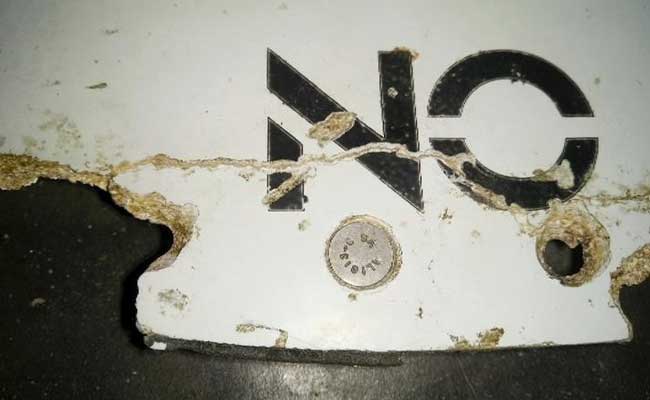
Blaine Gibson is a lawyer from Seattle who has dedicated himself to solving the mystery of MH370's disappearance. (Reuter Photo)
Sydney:
If Malaysia Airlines Flight 370 is ever found, the wreckage will immediately present a host of new questions before it's likely to provide answers about the plane's disappearance nearly two years ago.
What will be recovered? Who will pay for it? How much evidence has already been lost forever? Here are some key issues that will crop up if the plane is located:
Much Could Remain In Ocean
Given that the Boeing 777 is believed to be in waters as deep as 6.5 kilometers (4 miles), there are no plans to bring the entire plane to the surface, said Martin Dolan, chief commissioner of the Australian Transport Safety Bureau, which is running the search. Crews will instead focus on retrieving the parts of the aircraft that are most likely to yield clues into its fate, such as the "black box" data and voice recorders, and the remains of the 239 passengers and crew.
 Joint Effort
Joint Effort
Australia would be in charge of any recovery effort, but because that would involve victim identification and retrieval, it would work closely with Malaysia, which is in charge of the investigation. Black boxes and other aircraft parts would be taken to ATSB headquarters in the Australian capital, Canberra, where Malaysian and Australian experts would analyze the data.
Funds Available, For Now
There are still enough funds in the budget Australia set aside for the search to fund the recovery, said Dolan. But if the plane is discovered when that budget has run dry, Australia will have to confer with other countries to figure out how to pay what would be a complex effort requiring specialized equipment.
The ATSB has gathered a list of companies with equipment capable of retrieving wreckage from the seabed. Crews would need to photograph and map the debris field, then get the specialized vessels and crews to the remote search site. All of that will take a couple of months.
Black Boxes Have Limits
If the black boxes are recovered, the data recorder should reveal details related to the plane's controls, including whether aircraft systems that might have helped track the plane were deliberately turned off, as some investigators theorize. But data recorders won't necessarily reveal who took those actions and why.
Conversations captured by the cockpit voice recorder could reveal more about what happened, but the device aboard the lost Boeing 777 could hold only the last two hours of recordings. Information from early in the flight was likely erased. That flight recorder exceeded the international standard at the time.
Airliners built after Jan. 1, 2021, must be equipped with 25-hour voice recorders capable recording the entire flight under new rules recently approved by the International Civil Aviation Organization, a U.N. agency that sets global aviation standards. However, there is no requirement to retrofit existing planes with longer recorders.
(This story has not been edited by NDTV staff and is auto-generated from a syndicated feed.)
What will be recovered? Who will pay for it? How much evidence has already been lost forever? Here are some key issues that will crop up if the plane is located:
Much Could Remain In Ocean
Given that the Boeing 777 is believed to be in waters as deep as 6.5 kilometers (4 miles), there are no plans to bring the entire plane to the surface, said Martin Dolan, chief commissioner of the Australian Transport Safety Bureau, which is running the search. Crews will instead focus on retrieving the parts of the aircraft that are most likely to yield clues into its fate, such as the "black box" data and voice recorders, and the remains of the 239 passengers and crew.

The debris will be tested by officials in Australia, with help from Malaysian authorities and representatives of manufacturer Boeing Co. (Reuters Photo)
Australia would be in charge of any recovery effort, but because that would involve victim identification and retrieval, it would work closely with Malaysia, which is in charge of the investigation. Black boxes and other aircraft parts would be taken to ATSB headquarters in the Australian capital, Canberra, where Malaysian and Australian experts would analyze the data.
Funds Available, For Now
There are still enough funds in the budget Australia set aside for the search to fund the recovery, said Dolan. But if the plane is discovered when that budget has run dry, Australia will have to confer with other countries to figure out how to pay what would be a complex effort requiring specialized equipment.
The ATSB has gathered a list of companies with equipment capable of retrieving wreckage from the seabed. Crews would need to photograph and map the debris field, then get the specialized vessels and crews to the remote search site. All of that will take a couple of months.
Black Boxes Have Limits
If the black boxes are recovered, the data recorder should reveal details related to the plane's controls, including whether aircraft systems that might have helped track the plane were deliberately turned off, as some investigators theorize. But data recorders won't necessarily reveal who took those actions and why.
Conversations captured by the cockpit voice recorder could reveal more about what happened, but the device aboard the lost Boeing 777 could hold only the last two hours of recordings. Information from early in the flight was likely erased. That flight recorder exceeded the international standard at the time.
Airliners built after Jan. 1, 2021, must be equipped with 25-hour voice recorders capable recording the entire flight under new rules recently approved by the International Civil Aviation Organization, a U.N. agency that sets global aviation standards. However, there is no requirement to retrofit existing planes with longer recorders.
(This story has not been edited by NDTV staff and is auto-generated from a syndicated feed.)
Track Latest News Live on NDTV.com and get news updates from India and around the world

